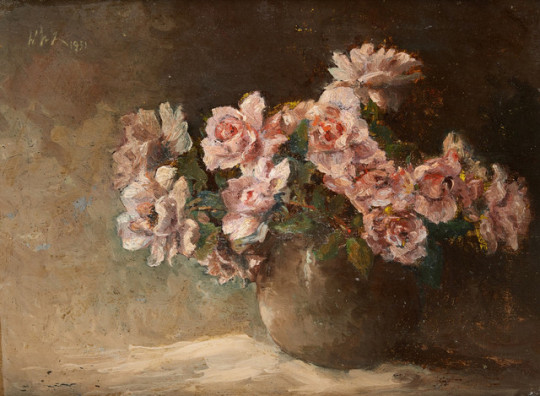#zuoren
Text

Wu Zuoren (Chinese, 1908-1997), Back of Nude, 1931. Oil on wooden board, 25.2 x 17 cm
45 notes
·
View notes
Text
Zouren
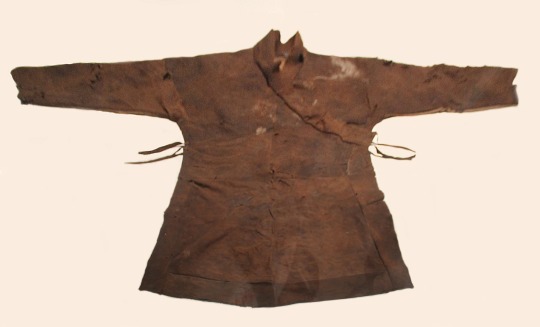
As opposed to the youren closure which closes over the right side the zuoren closure closes over the left. Typically the zouren is only associated with funeral practices since according to ancient Chinese beliefs the only time the Han Chinese are supposed to use zouren is to dress the deceased. It was therefore taboo for a living person to wear clothing with a zouren closure.
84 notes
·
View notes
Text
Rare Portraits Depicting Hanfu Worn with Right Over Left Lapel Closing (左衽).

Thirteenth Ancestor Portrait from Portrait Album of Wu’s Ancestors 吳氏先祖容像十三. Ni Renji. Painted sometime between the late Ming Dynasty and early Qing Dynasty during the artist’s life (1607-1685). Yiwu Museum, Zhejiang, China [image source].
For the Han, the left lapel was considered Yang and the right one Yin and, thus, living people placed the left lapel over the right one to symbolize Yang (life) covering Yin (death). That’s why only dead people had their right lapel over their left. In the case of the dead, Yin (death; right lapel) overtook Yang (life; left lapel). Moreover, the left over right lapel (右衽) served as an ethnic distinction for the Han.
However, not all living Han people followed this tradition and there are documented cases of them wearing their hanfu with the right lapel over the left one.
There are exceptions in which living Han Chinese would wear clothing with a zuoren closure. For example, in some areas (such as Northern Hebei) in the 10th century, some ethnic Han Chinese could be found wearing left-lapel clothing. It was also common for the Han Chinese women to adopt left lapel under the reign of foreign nationalities, such as in the such as in the Yuan dynasty. The practice of wearing the zuoren also continued in some areas of the Ming dynasty despite being a Han Chinese-ruled dynasty which is an atypical feature.
Wikipedia, Garment collars in Hanfu
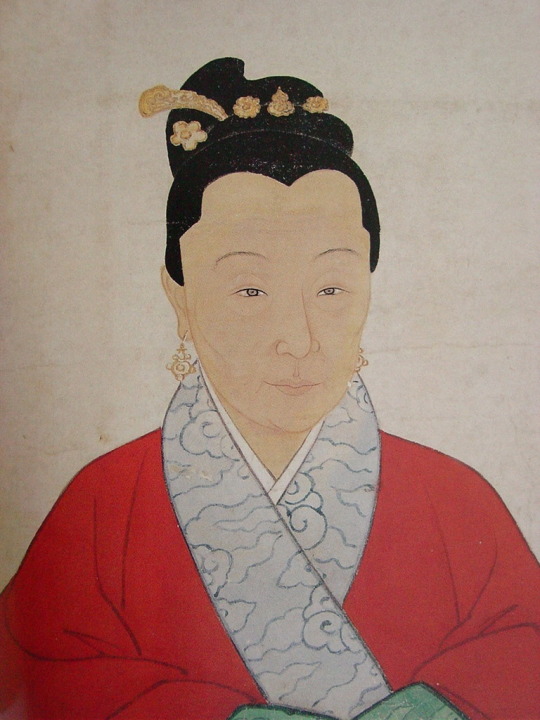
Fifth Ancestor Portrait from Portrait Album of Wu’s Ancestors 吳氏先祖容像五. Ni Renji. Painted sometime between the late Ming Dynasty and early Qing Dynasty during the artist’s life (1607-1685). Yiwu Museum, Zhejiang, China [image source].
Other non-Han ethnicities, such as the Khitans and Xianbei, would preserve their 左衽 tradition even after adopting hanfu. It’s possible for these women (and its mostly women wearing hanfu depicted with 左衽) to be non-Han in origin or are Han but came from areas where 左衽 was still practiced due to non-Han ethnic influence. I remember reading somewhere that, South of the Yangtze, certain Han women wore their hanfu in both styles.
Since almost all of the portraits below are ancestor portraits and there are plenty of those where the women and men wear 右衽 despite being dead at the time of painting, it’s unlikely that the 左衽 depicted is meant to indicate that the woman is dead.
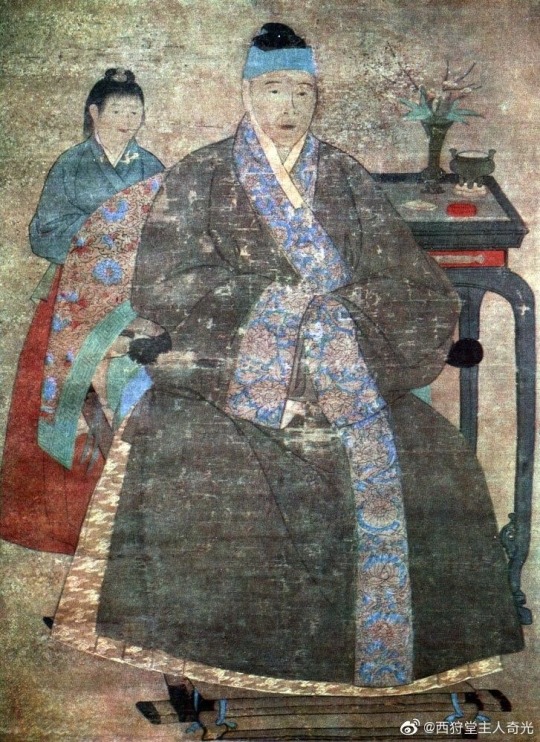
Portrait of the wife of a dignitary with maid by Chow Ying. Scroll. Painting on silk. 16th century. Moscow State Museum of Oriental Art [image source].

Portrait of Father Zhang Jimin and Mother Zhao. Unknown artist. Ming or Qing dynasty, Late Ming or early Qing dynasty (17th century or later). Hanging scroll. Ink and colors on silk. Arthur M. Sackler Gallery. National Museum of Asian Art, Smithsonian Institution [image source].

Ancestor Portrait of a Court Lady. Possibly Ming Dynasty. Unknown artist. Hanging scroll (laid down on panel), ink and color on silk. The Nelson-Atkins Museum of Art [image source].
Notice how, even the maid in the background above, has 左衽.

Possible Portrait of Ancestor with maid. Unknown Artist. Possibly Ming Dynasty [image source].
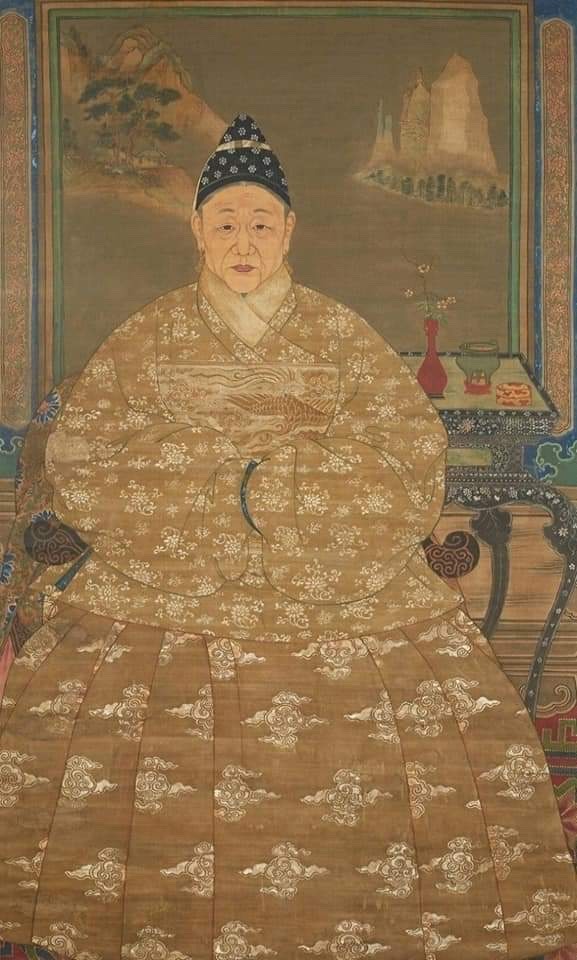
Ancestor Portrait. Unknown artist. Late 19th century. Qing Dynasty. Auguttes Auction House. [image source].
Note: Be careful when dating ancestor portraits. Many were painted posthumously and could depict ancestors from multiple previous generations. Just because the figures are seen wearing a dynasty’s distinctive clothing, does not necessarily mean that it was painted then. Some Qing Dynasty ancestor portraits depict ancestors from the Ming Dynasty and, thus, artists painted the figures with Ming clothing.
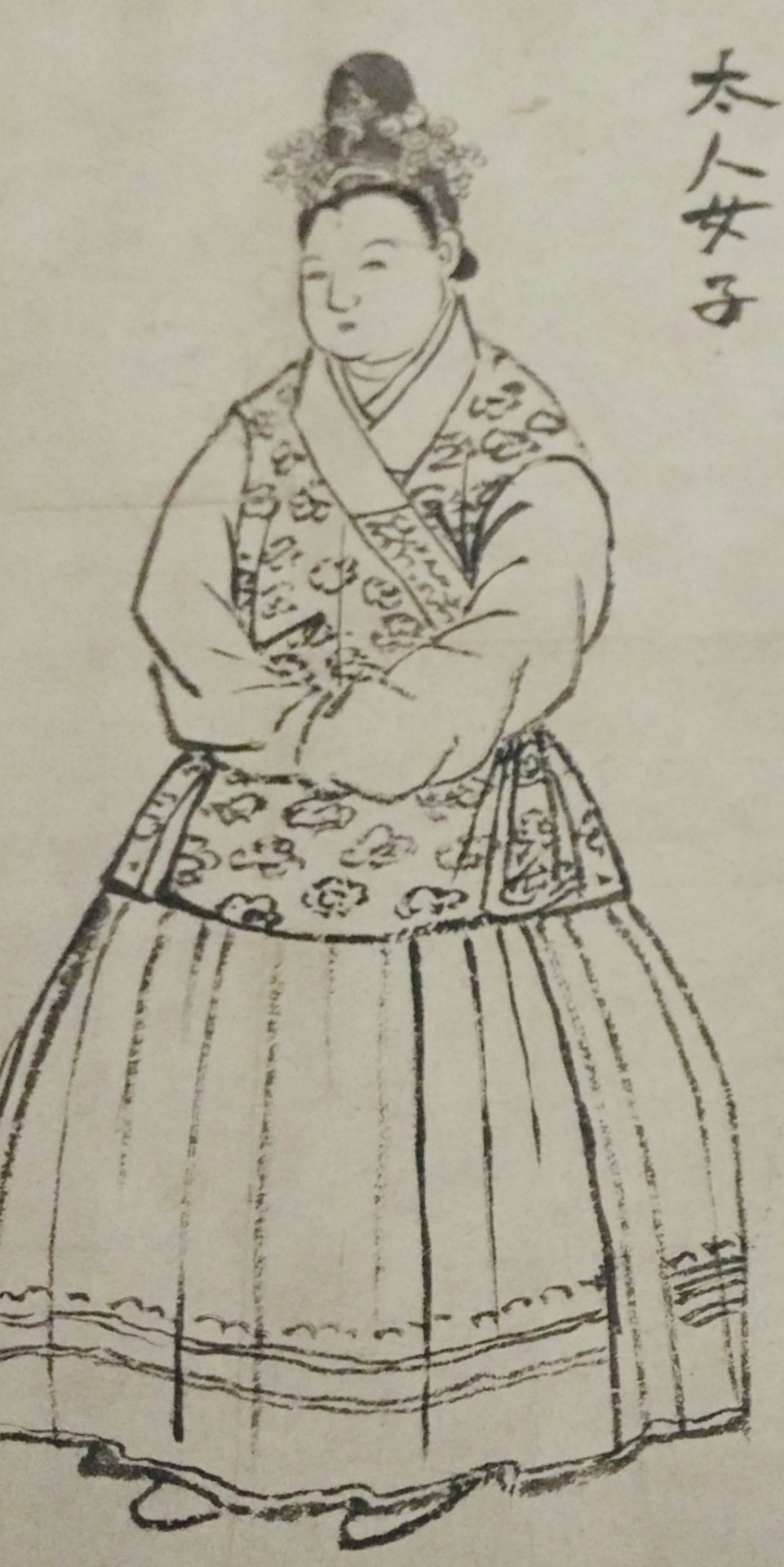

Images portraying hanfu in the Ming Dynasty with 左衽 drawn by Sesshu Toyo (1420 - 1506 CE), a Japanese monk who visited China between 1467 to 1469. Ink on paper [image source].
More portraits with 左衽 and modern recreation:
#chinese history#chinese culture#ming dynasty#ancestor portraits#右左衽#hanfu#ming paintings#ming portraits
127 notes
·
View notes
Text

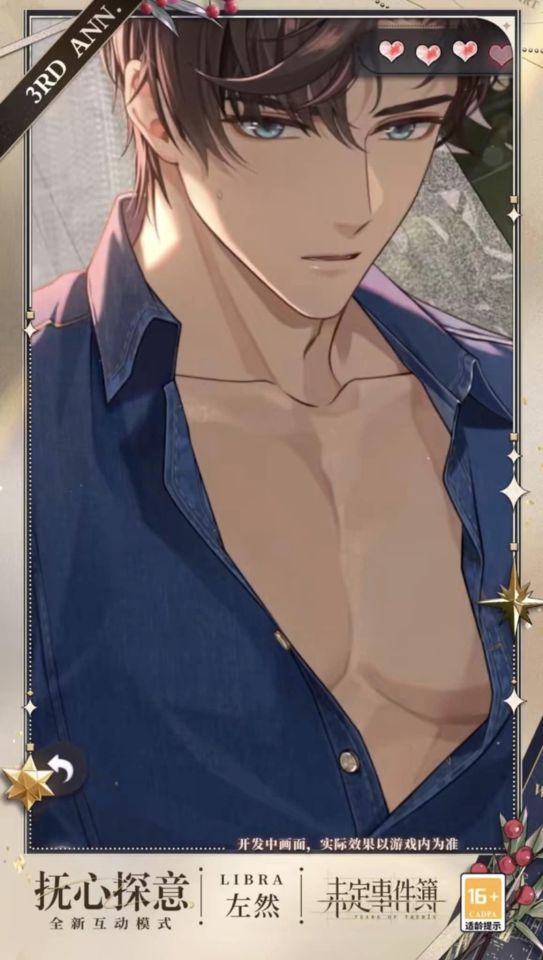
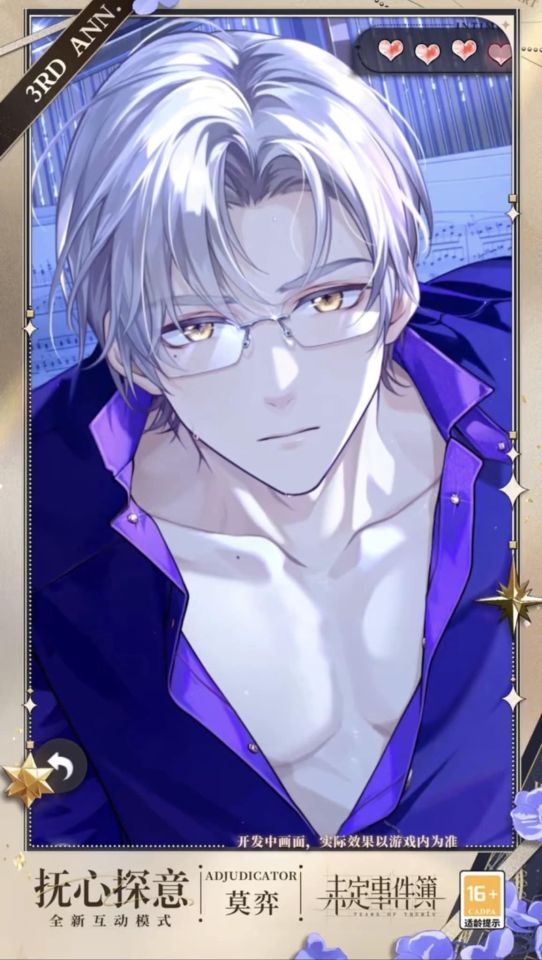
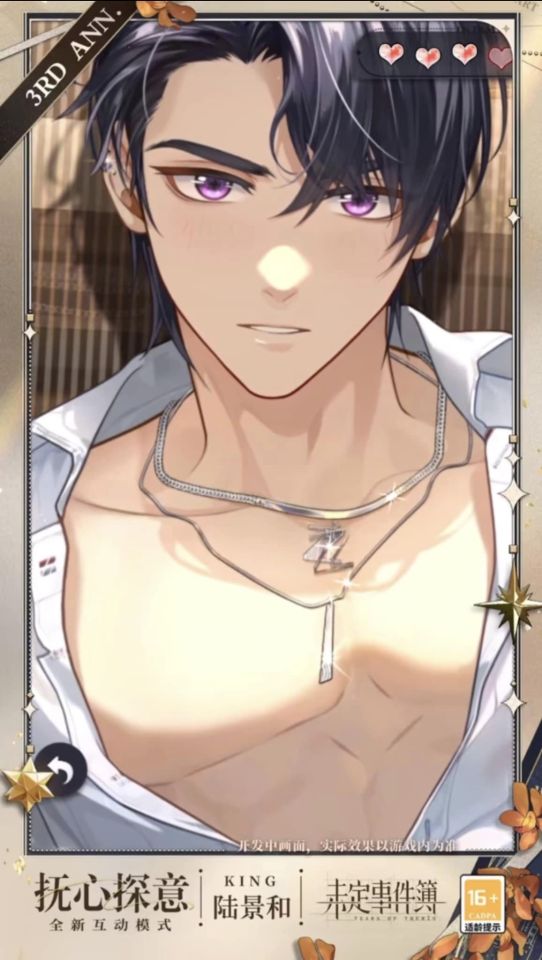
Tears of Themis 3th Anniversary : (SSS cards) 🔥
Game : Tears of Themis
Event: Where the Heart belongs
Server: China Mainland
Time: July 20 - July 31
ซีบไทย
English Sub
= SSS Cards =

💛 XiaYan (Luke) : Light {of Life and Love}

❤️ ZuoRen (Artem) : Confluence {of Romance}

💚 MoYi (Vyn) : Duet {for the Ages}

💜 Lu Jinghe (Marius) : Dreams {of the Synchronicity}
โอโตเมะเกมจีน ไขคดีไปกับหนุ่มหล่อ ฉลองครบรอบ 3 ปี กับการ์ด SSS (การ์ดใหม่ล่าสุด)
On July 20th, the new stage of the special event for the 3rd anniversary will open
The limited SSS (Draw) will be increased for anniversary.
Game : Tears Of Themis
By: miHoYo
Platform: iOS, Android
🌎 SERVER
Global: https://tot.mihoyo.com
Chinese: https://wd.mihoyo.com
Taiwanese: https://tot.tw.mihoyo.com/tw
38 notes
·
View notes
Text
What I read in 2023
2023 was a funny year for reading. I didn’t finish that many books – just 43 altogether, including one I read twice, and only one of them in Chinese.
There were various reasons for this. One was that among the books I did read were Ulysses and almost all of The Brothers Karamazov, both long, slow reads. I loved The Brothers Karamazov (my note on it here) – among the most fantastic tales I’ve ever read (actually reread – this was the second time round). Ulysses I also liked a lot. I wouldn’t go as far as Anthony Burgess, who in the blurb on the back declares it to be the greatest novel of the 20th century, but it’s one of them. It also laid down a standard for experimentation which more writers since Joyce should have tried to surpass; reading it made me think how conservative 99% of novelists are.
Another reason for my low books-finished total was that a good part of my reading time was spent on four text books – for International Baccalaureate physics and IGCSE physics, chemistry and biology – all part of trying to get a handle on what two of my kids were meant to be learning, and none of which I actually finished (though I did finish the IGCSE trio a few days ago; I’ll add a note on them soon). All four required close attention, frequent rereading of definitions and dense paragraphs. If it hadn’t been for the Internet and especially many YouTube videos, I wouldn’t have been able to handle the IB book; the IGCSE ones were more my level. I think I could pass all three subjects, though I wouldn’t score particularly highly.
As for the Chinese, I did read most of another book and spent more time reading news. But I also took a bit of a break. And the one book I did read, Selected Essays by Zhou Zuoren, was tough going (as I noted here).
As in 2022, I didn’t manage to keep up my 2021 practice of writing around 250 words on each book I read – again, I’ll blame my textbook reading. The ones I did have links. This year I’m going to give it another go.
The standouts
Non-fiction
Odd Arne Westad, The Cold War – a tremendous global history of the 1945-90 period.
Pamela Kyle Crossley, The Manchus – the unlikely people behind China’s last imperial dynasty.
Timothy Snyder, Bloodlands – the terrible history of Ukraine and the other lands around it from the 1930s to just after the end of the second world war.
EB Sledge, With the Old Breed – a Marine’s experiences on two islands in the second world war.
Napoleon Chagnon, Noble Savages – an anthropologist in the Amazon in the 1960s whose findings upset a lot of other anthropologists.
John Gribbin, The Reason Why – that intelligent life exists at all is miraculous; we should care about it (ie, us) a little more.
Bas van Bavel, The Invisible Hand? – why markets can’t be the answer when they make people rich and powerful.
Colleen Carney & Jack Edinger, Insomnia and Anxiety – a book that has made me sleep better and worry less.
Fiction (aside from Ulysses and The Brothers Karamazov)
Mohsin Hamid, The Last White Man – a masterpiece in just 180 pages.
Annie Ernaux, A Man’s Place/The Years/A Woman’s Story/“I Remain in Darkness” – more than worthy of the Nobel prize.
Honorary mentions
Vaclav Smil, Energy and Civilization – Smil is right: energy underpins everything (though it’s not the only thing).
Chris Miller, Chip War – exactly how books should be written about big, important topics.
The list in full
Patricia Lockwood, no one is talking about this (I loathed this book)
Mohsin Hamid, The Last White Man
Sean Carroll, Something Deeply Hidden
Charles Yu, How to Live Safely in a Science Fictional Universe
Odd Arne Westad, The Cold War
Fyodor Dostoyevsky, The Brothers Karamazov, I
Frank Fraser Darling, Island Years
Milo Beckman, Math Without Numbers
Chris Bernhardt, Quantum Computing for Everyone
David Morgan, The Mongols
Doris Lessing, Ben in the World
Annie Ernaux, A Man’s Place
Doris Lessing, The Fifth Child
Avram Alpert, The Good-enough Life
Joseph Angelo, Gaseous Matter
Cormac McCarthy, The Passenger
Vaclav Smil, Energy and Civilization
Chris Miller, Chip War
Cormac McCarthy, Stella Maris
Annie Ernaux, The Years
Bruce Dickson, The Dictator’s Dilemma
Napoleon Chagnon, Noble Savages
Annie Ernaux, A Woman’s Story
Annie Ernaux, “I Remain in Darkness”
Isaac Asimov, I, Robot
Nicole Perlroth, This Is How They Tell Me the World Ends
Pamela Kyle Crossley, The Manchus
Timothy Snyder, Bloodlands
Jin Keyu, The New China Playbook
Ursula Le Guin, Gifts
EB Sledge, With the Old Breed
Ackbar Abbas, Hong Kong: Culture and the Politics of Disappearance
Frank Dikotter, China After Mao
Catherine Lacey, Pew
James Joyce, Ulysses
John Gribbin, The Reason Why
Christine Brooke-Rose, Amalgamemnon
Zhou Zuoren 周作人, Selected Essays 散文選
Bas van Bavel, The Invisible Hand
Shibani Mahtani & Timothy McLaughlin, Among the Braves
Colleen Carney & Jack Edinger, Insomnia and Anxiety
Ursula Le Guin, Gifts
Wang Xiaobo, Wang in Love and Bondage
For the record
I never got round to posting What I read in 2022 until two days ago. It’s here – just the bare list.
0 notes
Quote
I don't believe that people die and become ghosts, but I believe that, behind people, there are ghosts
Zhou Zuoren
0 notes
Text
“All that can be spelled out is without importance.” --Zhou Zuoren
The Hall of Uselessness: Collected Essays (New York Review Books Classics)
Leys, Simon
0 notes
Text
Beware of fake oil paintings
Beware of fake oil paintings
A few years ago, a Taiwan painting dealer took two pictures that are said to be Wu Zuoren's oil paintings to let the author see whether there is fraud. From the picture, the brushwork is slow and astringent, and the color is monotonous, which is not like the oil painting of Wu Zuoren seen in the past. Since it is hard to say whether the painting is a fake or not because we have not seen the original, we have to give advice: "Even if it is painted by Wu, it is not a post-Brexit painting." Whether it is worth the investment, please decide for yourself. https://painting-portrait.com/
In recent years, fake paintings are rampant, but few involve foreign painting, such as oil painting. Probably because in addition to a few of everyone's works, the general people buy music and painting are more home decoration, investment collectors are very few. A few years ago, overseas galleries took Chinese oil painting fever, thus making; The e soaring prices of older Chinese oil paintings have caught the attention of buyers, and fakes have entered the market
In fact, in recent years, some of the paintings of the project are very questionable, the most outrageous one is the 2001 Hangzhou West Lake Expo "' Rainy Night Floor 'collection of early Chinese oil painting exhibition", the exhibition of more than 200 works, including almost all early Chinese oil painters. Among them, there are 19 oil paintings and three sketches by Li Tiefu. When I first saw the news, I had my doubts about these paintings. Guangdong is the birthplace of Li Tiefu and the place where he lived in his later years. Over the years, all parties have searched for only 20 or 30 oil paintings. Why are there 19 of his oil paintings in Jiangsu and Zhejiang? So you don't know.
From the 1918 painting "Musician" and 1919 painting "Matador" can be seen that Li Tiefu oil painting skills as early as 1920 to be skilled, why to copy other people's paintings in 1939? The biggest flaw is the signature in the painting. In his early signature, Li Tiefu usually wrote his Chinese name "Tiefu Li Wentian" and signed his English name "L.Y.EIN". Later, he simply signed his Chinese name "Tiefu". Tamata is Li Tiefu's original name. The copyist may only know Li Tiefu but not his original name, which is why he has the "T.F.EE" signature. Two other paintings, called Li Tiefu, were found to be poor copies, one by a French painter, the other by an American painter, Hawke, in "Doubt". Its rough picture, I believe that some oil painting accomplishment of the people can see.
According to the few pictures we have seen, the fraud of this batch of "Rainy night floor collection paintings" is very crude. It is said that the frames of these paintings are worn and peeling, and some of them are also cracked, so they can be regarded as evidence of authenticity. In fact, these are small tricks, not difficult!
In contrast to the clumsiness of this batch of paintings, the propaganda is quite clever. The mysterious owner confused the source of the painting, and raised the appetite of the media, so that many newspapers and magazines at home and abroad, television for this unknown origin of the painting was introduced, some media even gave high praise, finally the painting to the West Lake Expo appearance, in order to get public recognition.
Because Chinese people are not familiar with Western music and painting, so far there is no professional institution in China for the technical analysis of early sleeve paintings, coupled with the rapid market demand, there will naturally be fake paintings. Take a walk through Guangzhou's art shop Street and you will see a large number of copies of oil paintings for sale. The AUTHOR ALSO ASKED A FEW SPECIAL FACE painting "LINE goods SON", they COPY WESTERN oil painting for a long time, to the original author is who has lost the feeling, anyhow boss "fall alone", look at can also. Have you ever seen the oil paintings of early Chinese painters? No one can say for sure. More than TEN years ago, a friend of the author who painted "goods" copied the QING Dynasty Guangdong export oil painting for the American guest. These days, whatever sells sells. Don't believe it? Go TO THE GALLERY OF WENde ROAD to have a look, COPY of Chen Yanning, Chen Yifei can be found at any time, and also can order, want who's painting, single, in a few days to be available, so want to buy early Chinese oil painting market should be vigilant https://painting-portrait.com/
1 note
·
View note
Note
do you have any pictures or resources on what yuan dynasty hanfu looked like? i see a lot of song and ming, but rarely yuan. i know it was ruled by the mongols, but i don’t think i ever read that the han were forced to wear mongol clothing like they were manchu clothing during the qing dynasty.
Yes. Han was not forced to wear Mongolian clothing in Yuan dynasty, but before the Mongolians conquered all of China, the northern part of zhongyuan regions was conquered by Jin Dynasty of the Jurchens, who enforced rules to wear only Jurchen clothing. Hence, in Yuan dynasty Han people from the north and the south (previously ruled by Song dynasty) had different dressing habits. At the same time, for various reasons people might switch to Mongolian clothing. Hence, Han clothing during the Yuan dynasty was a mix and match of various cultures, depending on where those people were from. Those from the north would wear clothing predominantly influences by Xixia, Liao, Jin dynasties, while those from the south would wear clothing evolved from Song.
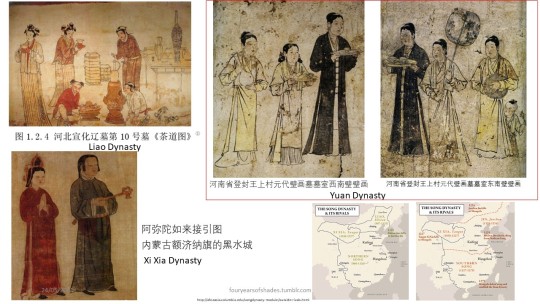
Men usually wore cross-collar or circular-collar robes, similar to Song dynasty.

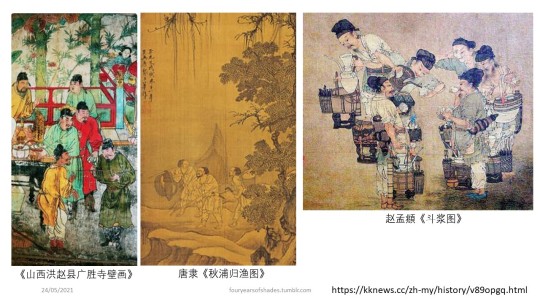
Woman often depicted wearing ao/shan with mamian qun, often with a short-sleeves parallel collar jacket. There is not many ao/shan excavated from Yuan dynasty. On the other hand, many short-sleeves did. These short-sleeves came in a variety of size (sleeve-length, fitting), and could have side vents. These short sleeves was probably inherited 貉袖hexiu of the Song dynasty.
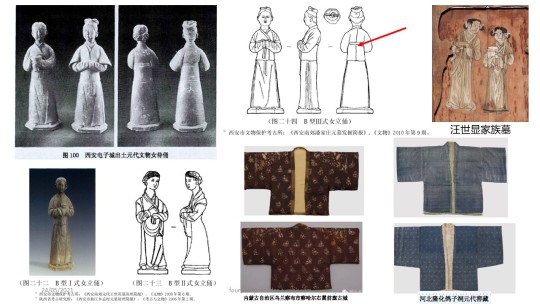
The blue and brown colour short-sleeves represent two important colours in Yuan dynasty wardrobe. The Mongolians hold blue-green in high regard, while brown was one of the most common colour for the commoners (because Yuan dynasty banned commoners from wearing many bright colours and could only wear the natural colour of the fibre or dark colour).

There might be other type of skirts around that was not mamian qun.
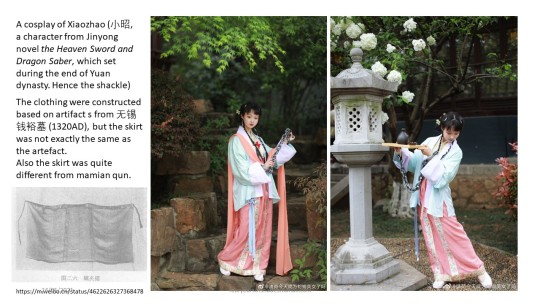
Left or right
Interestingly, from the figurines and murals, women often depicted as wearing the right lapel over their left lapel (左衽zuǒrèn). While men wore their clothes like Han people, with the left lapel over the right lapel (右衽yòurèn; the collar forms a y shape).
It was speculated that Mongolians used to wear zuoren, but later they officially pushed for youren, due to Han influence. It is possible that the switch did not affect women and commoners, although there are drawings of high-ranking Mongolian women in youren.
In addition, unlike Han people of the time, they actually regards the right side as the more important side, although later they switched back to the left side. Hence the position of the husband and wife depicted on murals was used as an evidence to place the period of the tomb.
At the same time, the Jurchens actually worn zuoren exclusively. Thus women wearing zuoren might just be something left over from Jin dynasty.
Effect of Yuan Dynasty
Yuan dynasty introduced many new elements into Han people’s wardrobe, and some even stayed firmly in Ming dynasty (much to the effort of the Hongwu Emperor). Some examples:
Terlig, jisun and others gave rise to tieli, yesha, dahu, zhaojia etc.
The closing of cuff 收祛
钹笠帽Bólì mào (don’t know what its Mongolian name) became damao
The Nasich textile weaving technique form Persia
The golden collar and upper arm decorations (云肩)
The golden rectangular decorations on the chest and the back became buzi

This is a very brief introduction to Han clothing during the Yuan dynasty. I am not particularly familiar with this dynasty and I hope I did not made any glaring mistake.
Some References
北方地区蒙元壁画墓研究_洪淑莹
关中元墓出土陶俑研究_蒲洋
���元关中服饰文化研究_赵学江
蒙元时期随葬俑的研究_徐正宇
穹庐一曲本天成_张宏瑜
中国古代设计中的_胡化_与汉胡融合现象研究_陈筱娇
元代妇女服饰简论(上)——服装和化妆
Archeology reports
苏州吴张士诚母曹氏墓清理简报_郭远谓
邹县元代李裕庵墓清理简报_王轩
江苏无锡市元墓中出土一批文物_钱宗奎
河北隆化鸽子洞元代窖藏_田淑华
洞藏锦绣六百年之——两件元代对襟半臂短袄的保护与研究_ 贾汀
On youren and zuoren
北方地区蒙元壁画墓研究_洪淑莹
北方蒙元墓葬墓主人形象与族属问题的再思考_赵丹坤
蒙元关中服饰文化研究_赵学江
蒙元时期周边文化对蒙古族服饰影响探析_陈晓
穹庐一曲本天成_张宏瑜
The woman in slide 4 and 5 was 清荷今天成为蛇蝎美女了吗 on weibo. Pictures used with permission.
24/05/21 Edit slide 7, add more references.
#yuan#hanfu#banxiu#historical clothing#chinese historical clothing#yuan dynasty#lp#reference#fouryearsofshades#清荷今天成为蛇蝎美女了吗#ask#Anonymous#chinese art#mural#zuoren
314 notes
·
View notes
Text
La era del consumidor suscrito
La era del consumidor suscrito
Tintorerías, videojuegos, medios de comunicación, productos de cuidado personal, gimnasios, servicios de salud, productos para mascotas, coches… Cada vez son más los productos y servicios de los que el consumidor puede disfrutar a cambio de una tarifa plana, un modelo de negocio que está cambiando por completo el mercado y que según algunos expertos ha llegado para quedarse.
(more…)
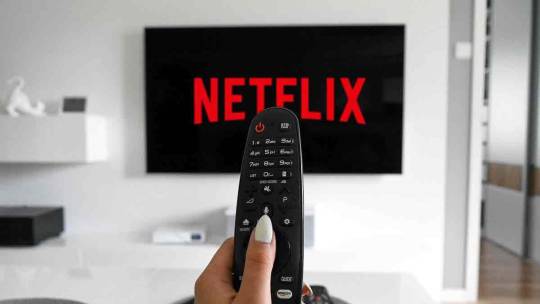
View On WordPress
#Amazon Prime#Ana Jiménez-Zarco#Bankinter#consumidor#DigiBiz#era#Generación Y#Inma Rodríguez-Ardura#Internet#iPhone#Netflix#Neus Soler#Silvia Martínez#Spotify#The Telegraph#Tien Tzuo#Universitat Oberta de Catalunya#UOC#Zuora#Zuoren
0 notes
Photo
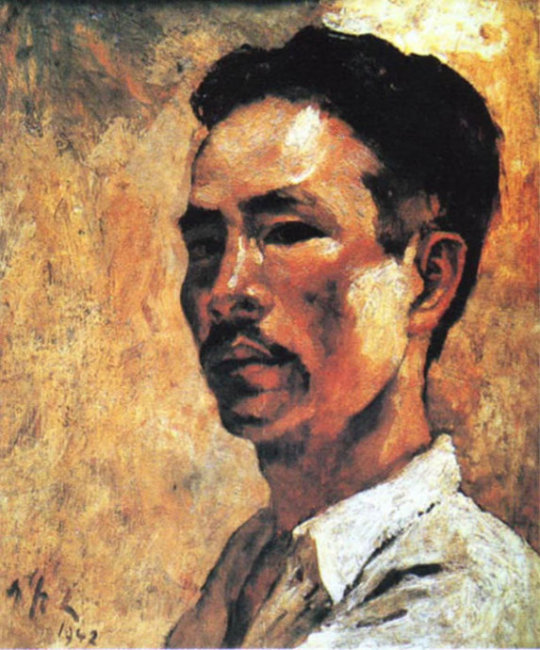
Wu Zuoren / 吴作人, b. 1908, d. 1997
Self Portrait
China (1942)
[Source]
Wikipedia says:
Wu Zuoren was a Chinese painter. A native of Jing County, Anhui, he was born in Suzhou, Jiangsu Province. He practiced both traditional Chinese ink painting and European oil painting.
5 notes
·
View notes
Photo


La Peinture Chinoise Contemporaine de Style Traditionnel Texte de Chou Ling avec 8 Reproductions en Couleurs
https://www.abebooks.com/servlet/SearchResults?sortby=0&vci=65071755
0 notes
Photo

Wu Zuoren (1908-1997), Galloping Yaks, 1982. Ink on paper, 68.2 by 41.6 cm.; 26 7/8 by 16 3/8 in.
48 notes
·
View notes
Text
You know what the coronavirus pandemic hasn't stopped? The Hong Kong protests.
In fact, the protests have ramped up bc the CCP has passed on today, May 28th 2020 (HKT), the death sentence for Hong Kong, i.e. the most sinister plan to take away Hongkongers’ freedoms while we're all busy dealing with the coronavirus. Remember the now-withdrawn extradition law amendment bill (ELAB) that sparked the anti-ELAB protests last year? This new plan not only does that, but it even unleashes a whole new range of assault power.
No, the CCP isn't gonna crack down on Hongkongers with visible violence. They've learnt from the disastrous PR management of the June 4th / Tiananmen Massacre. Also, they need a better excuse for interfering in Hong Kong, 1 of the largest international financial centres and the gateway for the CCP to gain foreign currency and break into global financial markets.
Instead, the CCP’s plan is to force a "national security law" in Hong Kong like what they've been using in mainland China, bypassing Hong Kong’s legislature. The CCP leadership has already passed this law today, May 28th (HKT) and can sign it into effect as soon as early June.
We don’t know how much longer we can continue accessing international communication sites, which are banned in mainland China but freely accessible in Hong Kong, especially Google, WhatsApp, Tumblr, Twitter, Instagram, YouTube and Facebook. If we suddenly go silent about our fight for democracy, you can assume the censorship resulting from the "national security law" has taken effect.
Who’s gonna define that "national security law"? Most likely the CCP. They have their own legal system, instead of the common law system that HK uses based on the UK system. The CCP has an abominable track record of arbitrarily defining the law to persecute dissidents, violating human rights in the process. They have various means of silencing dissidents even if they manage to escape China. Well known dissidents include:
LIU Xiaobo, a Nobel Peace Prize Laureate.
HUANG Qi and TAN Zuoren, who advocated for an investigation into corruption in school construction following the 2008 Sichuan earthquake.
LI Wangyang, who took part in Tiananmen Square protests of 1989, tortured while in jail for 22 years and even still kept under surveillance after being released from prison.
WANG Quanzhang, a human rights lawyer who defends political activists and victims of police torture.
LEE Ming-che, a Taiwanese rights activist who promotes human rights and democracy online.
HU Jia, who posted articles on social issues which criticises the CCP.
WANG Yi (pen name: WANG Shuya), a Christian pastor who founded and led one of the well known underground churches in mainland China.
Tashi WANGCHUK, a Tibetan language education activist.
Currently, Hong Kong is the only city among all technically CCP-ruled regions where your freedoms and human rights are protected in practice (though fast eroding) with judicial independence (also starting to skew) following international law.
After the "national security law" passes, Hongkongers will lose all our fundamental freedoms and rights, including but not limited to:
Freedom of expression.
The right to peaceful assembly.
Freedom of the press.
Freedom of thought.
Rights against arbitrary arrest, detention or exile.
The right against torture; and even,
The right to life, liberty and security of person.
Our fight against the CCP will become illegal, since we'll no longer be able to monitor and speak out against the CCP and CCP-backed HK government. Our very existence as Hongkongers could be seen as a rebellion. Hong Kong today, the world tomorrow.
Everyone, no matter your nationality, will no longer be safe from the CCP. The CCP threatens international law. The proposed law plans to allow CCP agents to work in Hong Kong. Hong Kong is one of the largest international travel hubs. Whoever lives in, or simply passing through Hong Kong, could be kidnapped and transported to mainland China if the CCP thinks you’re a threat. Does that sound familiar? Yeah, bc that’s the exact potential loophole we criticised during the anti-ELAB protests. In fact, this kind of abduction already happened in 2015, in the Causeway Bay Books disappearances which include LAM Wing-kee and GUI Minhai. The booksellers were persecuted for selling books on politics, human rights, criticism of the CCP leadership, and any subject that the CCP leadership didn’t like.
After the "national security law" passes, we'll no longer have the freedom to raise the alarm to the world about new epidemics first popping up in mainland China, like the coronavirus now and SARS in 2003 (more from the WHO archive). Fun fact: Hongkongers have been managing the coronavirus relatively well precisely bc we don't trust the CCP-backed HK gov and we’ve been taking preventive measures way before it advises us to, based on previous experience with SARS.
We’ll no longer have the right to be assumed innocent until proven guilty in the court, not even the right to fair trial and equality under the law, since HK will no longer have an independent judicial system under the separation of powers. Hong Kong is run on the rule of law but the CCP runs on the rule by law, and the CCP has increasingly pressured HK’s judges. Foreign judges will be banned from national security cases, likely bc they are more likely to uphold the rule of law and independent judiciary.
We'll no longer have the freedom to talk about the truth. Instead, we’ll be forced to censor ourselves and substitute the truth with CCP approved propaganda. The CCP knows who controls the truth controls society. The coronavirus? “No, it's spread to China by the US armed forces. It's a part of their plan to frame the CCP.” Banning TikTok and Huawei? “They don't cause security or privacy issues. There's no censorship on the platforms provided through these technologies. The ‘accusations’ are a part of an international plan to frame the CCP.” (Notice a pattern here?) Just 3 days ago (May 25, 2020), the Hong Kong exam board, which is independent from the Education Bureau, was forced to cancel a public exam question about Japan’s roles in the development of China from 1900 up to WWII bc it “hurts Chinese people’s” (aka CCP’s) “esteem and feelings”.
We'll no longer have the freedom to connect with the international community (Joshua WONG, Hong Kong activist) and different cultures with open minds, as the CCP looks down on the values and impacts of non-CCP-approved-Chinese cultures. It has an insatiable need to dominate the world through homogeneity, seizing natural resources, and economic expansion. Just look at how the CCP treats Uyghurs and Tibetans. Read about the Belt and Road Initiative especially in Africa - it's practically CCP colonialism. Then look at how the CCP, by building dams in upstream Mekong River, has caused a drought in Thailand, Laos, Cambodia and Vietnam. The CCP keeps claiming without proof that Hongkongers who want democracy are a minority (Spoiler: We aren't. At least 2 million residents out of 7.5 million, i.e. over 1 in 4 residents, marched for democracy on June 16, 2019. Remember?) are influenced by Western chaos agents, bc the CCP can't afford citizens thinking critically, criticizing and holding them accountable for their actions. Case in point: the June 4th / Tiananmen Massacre. The CCP-backed HK gov has extended the ban on social gatherings until (you guessed it) June 4th, which is rumoured to stop people from holding vigils, even though daily new coronavirus cases are in single digits and schools are reopening a week before.
We'll no longer have the freedom to maintain our identity of being Hongkongers, since according to CCP logic, being local / Hongkongers means identifying against CCP-controlled China → challenging and rebelling against the CCP → directly threatening CCP’s authority → enemy of CCP. The most conspicuous symbols? The Hong Kong anthem, Glory to Hong Kong. And Cantonese, the native language of over 90% of Hongkongers. A similar case has already happened with Tibetan culture and language: Tashi WANGCHUK, a Tibetan language education activist, was persecuted in 2018 simply for advocating to preserve his own heritage.
(Side note: If you ask if somebody speaks Chinese, it's like asking if they speak Asian or European. “Chinese” encompasses a group of languages which include Cantonese, Taiwanese and Mandarin, which currently many people refer to as “Chinese”. If you start talking in mainland-Chinese accented Mandarin to Hongkongers without asking, you'll get responses ranging from confused / pained replies in most likely English, often Cantonese, or rarely, Mandarin; the side eye; the silent treatment; or even a glare. We’re far more welcoming if you speak Taiwanese-accented Mandarin though.)
Hongkongers will keep fighting for our rights, and we need reinforced international support in our most urgent battle. So what can you do to stand with us?
1. Chris PATTEN, the last governor of Hong Kong under British rule, has led a joint statement to protest against the CCP’s move to force the "national security law" in Hong Kong. As of writing on May 28th, the day of passing the law, the joint statement's been co-signed by over 618 political representatives and academics from 33 countries, including the UK, the US, the EU, Canada, Australia, Russia and the rest of Asia. Please write to encourage your local policymaker to cosign the letter (template linked in-text).
2. Sign petitions that support our fight for freedom, e.g. international sanctions against the CCP, the CCP-backed Hong Kong government, and the Hong Kong Police Force.
3. Continue making posts in support of Hongkongers on your regular social media sites, esp Twitter, where there's a higher chance of politicians seeing your posts.

Yeah, like Matan EVENOFF, who tricked the NBA dance cam into streaming support for Hong Kong.
4. Report content spreading pro-CCP propaganda about the Hong Kong democracy movement; report both the comment / post and the account. Some common insults pro-CCP trolls use: “cockr**ch” (dehumanizing Hong Kong protestors); “sb” (initials of “d**chebag” in Mandarin); “nmsl” (initials of “Your mum is dead” in Mandarin); “biss” (a contraction of “must d*e” in Mandarin); and insinuating in any way that anyone in support of the protests is a “servant” or a “pet” of foreign politicians. People have mentioned that on Twitter, reports on pro-CCP troll content are more thoroughly followed up on and the content more likely to be removed. I've found that on Instagram, reporting as spam has a higher removal rate than reporting to other relevant categories.
5. Stay updated with the situation on HK by following independent and/or pro-democracy journalists in HK:
Hong Kong Free Press (In English. Official website / Twitter @hongkongfp / Instagram @hongkongfp / Youtube @hongkongfp / Facebook @hongkongfp)
The Stand News (Mostly in Chinese, but you don’t need to know Chinese to understand their infographics. Official website / Twitter @standnewshk / Instagram @thestandnews / Youtube @standnewshk / Facebook @standnewshk)
RTHK News (In both English and Chinese news; publicly funded. As of May 28th 2020, it has still maintained objective reporting, but this could change for the worse quickly bc the CCP-backed HK government has plans to interfere in its editorial independence. Official website / Twitter @rthk_enews / Facebook @RTHKEnglishNews)
Guardians of Hong Kong / Be Water Hong Kong (a volunteer page that translates news from Chinese to English; it updates quickly. Official website / Twitter @BeWaterHKG / Instagram @guardiansofhk / Facebook @BeWaterHongKong)
No matter what ultimately happens to Hongkongers, you're helping us make history. And even if Hongkongers still lose in the end, promise us that you'll continue fighting for us.
Remember us for centuries.
#Hong Kong protests#Hong Kong#Hong Kong national security law#stand with Hong Kong#free Hong Kong#stand with HK#free HK#China#Chinese Communist Party#CCP#international politics#world politics#coronavirus#sars#tiktok#huawei#Taiwan#Tibet#Uyghur#Uighur#democracy#human rights#reblogs encouraged#I don't need dystopian fiction anymore bc I'm already living in one#we're the tributes. the divergents. the gladers.#we're gonna win no matter how long it takes
124 notes
·
View notes
Note
Hi there! I recently learned that in Japanese culture, the crossed collars of a kimono must be crossed left over right, and the only time they do otherwise is during a funeral. Is there a similar rule in crossed-collar hanfu? Thanks, I hope you have a wonderful day!
Hi! Yes, that’s right - in Chinese culture, there’s a rule that crossed-collar Hanfu must have the collars crossed left over right, and the only time otherwise is for traditional funeral clothes for the deceased.

This rule is called 交领右衽/Jiaoling Youren. Jiaoling means “crossed-collar”, and Youren means “right lapel”. Youren refers to the fact that the right collar is wrapped before the left. In the image below, the top section shows how to cross the collars of Hanfu, and the bottom section shows Youren (right) compared to Zuoren (left). Zuoren means “left lapel”, and refers to right-over-left wrapping:

So how did it come about that Hanfu collars are crossed left-over-right? There are two parts to the answer:
1) For convenience:
It’s more convenient for right-handed people to put on and remove Hanfu when the collars are crossed left-over-right. Keep in mind that the ancient Chinese discouraged left-handedness like many other historical cultures, considering it unnatural, barbarian, uncivilized, and unfortunate. Right-over-left collars thus became the norm for the garments of the deceased, as they would no longer need to remove their clothing. In addition, when the ancient Chinese entered the era of agricultural labor, they gradually discovered that left-over-right was more suitable for storing small items inside the collars (for right-handed people, at least), as Hanfu does not have pockets.
2) As a mark of civilization:
As the ancient Chinese used left-over-right collars to better adapt to agricultural labor, many surrounding peoples wore right-over-left collars. For example, several nomadic tribes of the northern steppes used right-over-left because it allowed the right shoulder more freedom of movement, which was more convenient for archery. The ancient Chinese thus considered the left-over-right style to be a mark of civilization, as opposed to the right-over-left collars of the “barbarians”. @fouryearsofshades writes more in detail on this history in this post.
Below is a painting from the famous Dunhuang Murals of the people of Tubo, an ancient Tibetan kingdom from the 7th-9th centuries. Notice how their collars are crossed right-over-left:

In contrast, below are figures from the Han dynasty (206 BC–220 AD) of entertainers (top) and foot soldiers (bottom). Notice how their collars are crossed left-over-right:
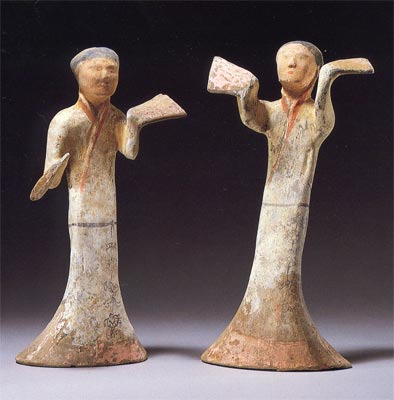
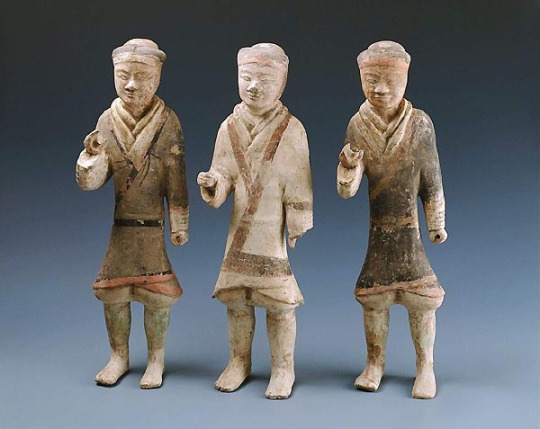
Keep in mind that to the ancient Chinese, differentiating their own civilization from other groups was a Very Big Deal, and they did so in several different ways, including fashion. Another example was how men were required to put their hair up, instead of letting it down like the “barbarians” did.
It’s similar to how the ancient Greeks and Romans didn’t wear pants because they found them ridiculous and considered them to be the clothing of “barbarians”. Pants were originally associated with the Persians, Scythians, Sarmatians, and Central Asian peoples.
While values about what constitutes “civilization” and whatnot obviously changed over time, the left-over-right style endured, and eventually became formalized into the Hanfu rule we have now.
Hope this helps!
Sources: 1, 2, 3, 4, 5
#hanfu#crossed collar#collars#reference#history#ask#reply#anon#>1000#chinese fashion#chinese clothing#kimono#china
1K notes
·
View notes
